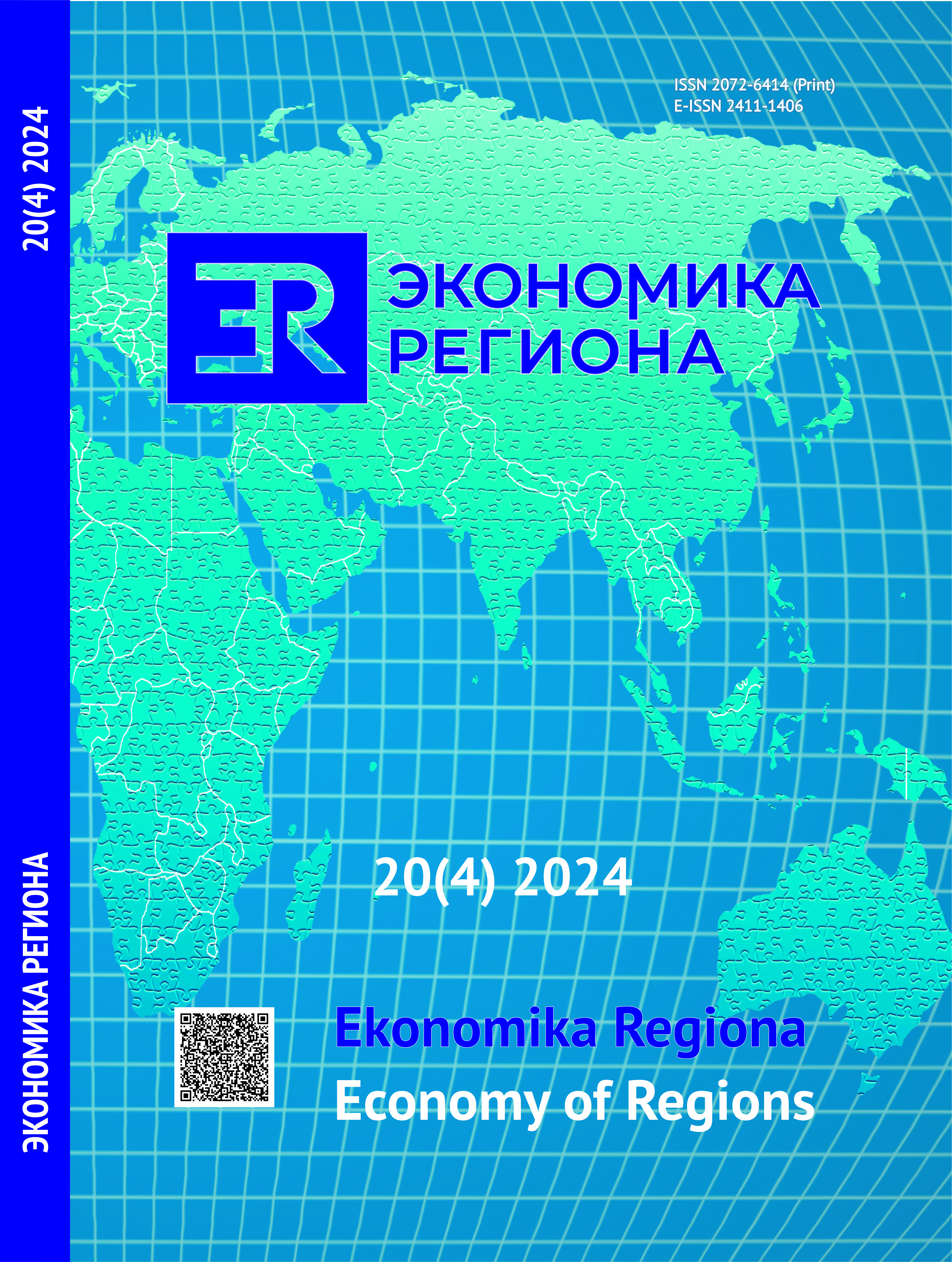Disparities in the Spatial Organization of Regions in the Ural Federal Okrug
DOI:
https://doi.org/10.17059/ekon.reg.2024-4-10Abstract
The heterogeneity of regions in terms of labour supply, natural and other resources, as well as production and social infrastructure, brings to the fore the need to assess the quality of economic space. To identify the strengths and weaknesses of specific areas and address regional disparities while fostering a more unified economic space, it is necessary to analyse the spatial organization of economic territories. The article discusses the spatial organization of regions in the Ural Federal Okrug. The federal okrug is analysed by looking at its constituent parts, using data from the Federal Municipal Statistics Service. The proposed methodology employs indicators across three key dimensions: economic space capacity, economic activity, and spatial connectivity. An integrated index is calculated for each dimension to assess the quality of economic space in 200 municipalities over two years (2012 and 2022). The results reveal pronounced spatial heterogeneity in population distribution, economic activity, and spatial connectivity across the Ural Federal Okrug. The analysis highlights significant variations in spatial organization between industrially developed regions (Sverdlovsk and Chelyabinsk Oblasts), the less industrialized Tyumen Oblast (excluding autonomous okrugs), the agrarian-industrial Kurgan Oblast, and the resource-driven Khanty-Mansiysk and Yamalo-Nenets Autonomous Okrugs, where economic development is shaped by raw material specialization and geographical conditions in the Far North. The findings highlight the need for differentiated spatial development strategies aligned with regional goals, while emphasizing the promotion of inter-municipal cooperation mechanisms to address the challenges of regional disparities. The study lays the groundwork for more informed prioritization of spatial development initiatives and updates to regional policies in the federal okrug.
Downloads
Published
How to Cite
Issue
Section
License
Copyright (c) 2024 Котлярова Светлана Николаевна , Шамова Елена Алексеевна

This work is licensed under a Creative Commons Attribution 4.0 International License.




